About AFL - Art For Life (AFL) is an established community-led model for safeguarding ICH that has helped tradition bearers beget recognition and improved socio-economic condition. AFL has revitalized oral traditions, art and craft and has transformed marginalized villages into cultural destinations. The objectives of AFL are strengthening skill transmission, providing direct market linkage, and promoting cultural diversity. AFL creates new audiences and motivates rural artists to work for cultural sustainability. AFL promotes Village, Artist & Art together and has evolved the process of art and culture led rural development.
Culture is way of life. It shapes our beliefs, customs, arts, and unique identities. TourEast celebrates these subtle nuances through tours woven around culture. We promote cultural destinations of rural West Bengal offering an experience of heritage and traditions of rural life. It is done through active partnership with local communities, ensuring economic benefits and strengthening their community identity and pride. It results in increased local ownership. Tourism here is a great leveler and culture the sap of sustenance.
We offer unique amalgamation of diverse cultures and natural beauty of myriad hues.
Nimdih is synonymous with Loksevayatan, an institute established in 1948 in the memory of Mahatma Gandhi. The ashram provides the economically disenfranchised, underprivileged children with education, and promotes local folk culture. They also work in the fields of organic farming and village industry. The Dol Utsav is celebrated with gaiety.
Read More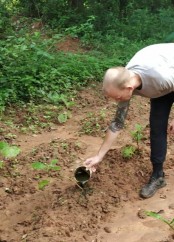
Birbhum, the land of red soil, is strong in culture and is one of the most prominent destinations within Bengal, due to Rabindranath Tagore and has also strong presence of traditional art and culture like Baul, Kantha stitch, Shola craft and Raibenshe dance.
Read More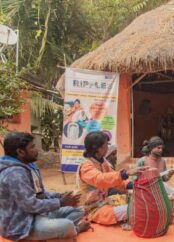
The last capital city of independent Bengal before British rule was named Nawab Murshid Quli Khan, the Dewan of Bengal, Bihar and Orissa. Situated on the banks of the Bhagirathi
Read More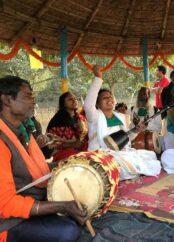
Joydev Kenduli is the cradle of Baul music. There are 10 ashrams in Joydev Kenduli out of which Baul music is practiced throughougt the year in 3 ashrams.
Read More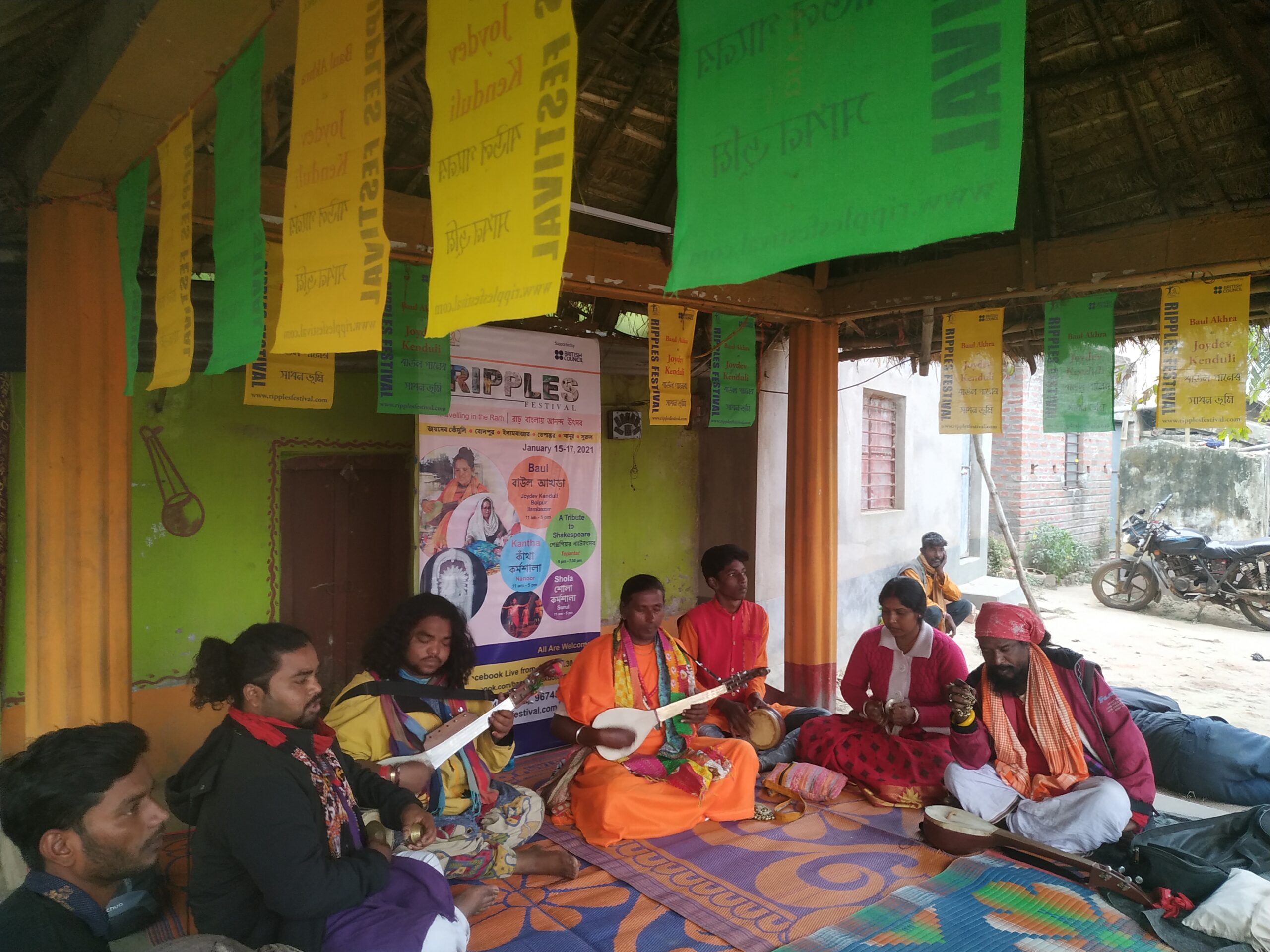
The coastal area is known as the land of folk traditions like Bhatiyali songs, Jhumur songs & dance and Banbibir Pala.
Read More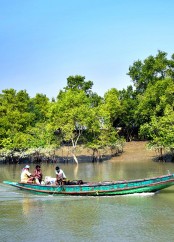
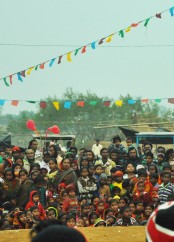
Bengal has a tradition of puppetry locally known as Putul Naach which is accompanied by songs. Muragacha, near Krishnanagar in Nadia, is the main string puppetry (Suto Putul, in Bengali) hub in Bengal.
Read More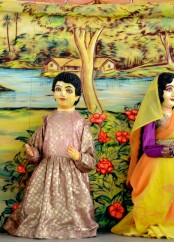
In Bengal, the word Madur is a generic for floor mats. Mats are an integral part of Bengal’s lifestyle. Madur is a tradition and pride of Medinipur. Women of the households are involved in weaving this beautiful craft.
Read More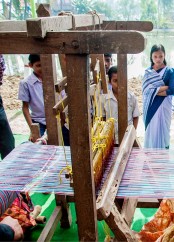
The northern part of West Bengal namely Darjeeling and Kalimpong districts are replete with traditional performing art forms which are brilliant in their content, presentation and musical richness.
Read More
Bhawaiya is a genre of folk song from northern part of West Bengal. Bhawaiya folk songs reflect the experiences of rural life, occupations, joys and sorrows of the people and express their harmony with nature.
Read More
Kantha for the Bengalis means embroidered quilt. It is a very familiar household item in Bengal. Kantha is unique as much for its traditional appeal as its contemporary allure. The craft is practised by rural women.
Read More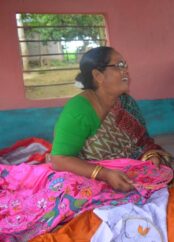
The clay dolls of Ghurni in Nadia are the integral part of Bengal's culture. These clay dolls are famous for their perfect detailing of forms, realistic features and marvellous expressions - making them a collector's item.
Read More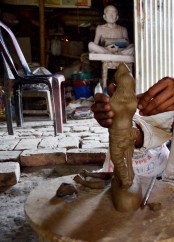
Families of tribal metal-ware craftsmen are keeping alive the age-old tradition of Dokra, breathing life into their creations. The hallmark of this art form is its rustic beauty that depict unique folk motifs that have evolved over time, remaining virtually unchanged.
Read More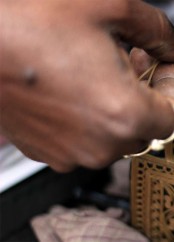
Scroll painters (Patachitra, Pata = scroll & Chitra = painting) tell tales of yore through their unique paintings and Earthy folk tunes (Pat-er gaan, Gaan = song). Their paintings are known for the use of bright hues – vibrant colours of the Earth in the way they occur in nature.
Read More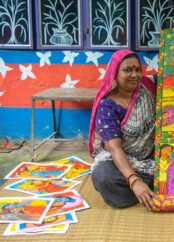
Charida is home to the Chau Mask makers. Chau is an acrobatic martial art based dance form and is inscribed in UNESCO Representative List of Intangible Cultural Heritage of Humanity. The vibrant, colourful and elaborate masks convey the vigorous intent of the art form that portray animals or characters from the epics.
Read More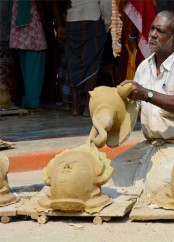
Gorbhanga is the village of the fabled Fakirs - makers of soulful, mellifluous music. It symbolises a quiet celebration of peace and free flowing music, practiced in the age old Baul tradition. From fields thriving in rich harvests to the eclectic chants of birds, Gorbhanga also has a rich treasure of nature’s bounty.
Read More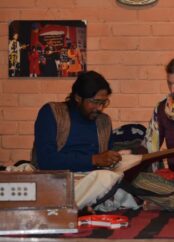
Panchmura the face of Indian handicrafts – the terracotta horse – comes home to roost. Steeped in tradition, the village has been molding clay to give vent to their creativity, following a calling that is passed from one generation to the next since time immemorial.
Read More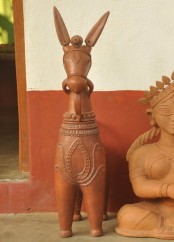
Villagers are weaving a relentless battle to save the tradition of Sital Pati (Sital = cold, Pati = mat) made from murta plants, their art, already a globally acknowledged epitome of sustainability and craftsmanship apart from being a grassroots enabler.
Read More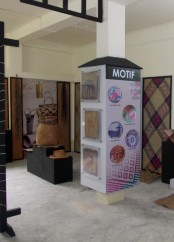
A hot bed of cultural heritage, both built and natural, where the legacy of wooden mask making continues to flourish, even as the womenfolk weave little ditty’s of art in their Dhokra mats known for their vivid colours and patterns that are exclusive to the region and the art form.
Read More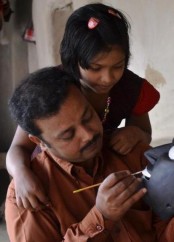
Rajasthan popularly called the Land of Royals has a rich cultural heritage of not only bewitching palaces, forts, memorials, bawlis, but also a kaleidoscope of folk songs, dance, painting and crafts. This website offers tourism experiences and itineraries of cultural hubs across the districts of Jodhpur, Jaisalmer, Barmer and Bikaner. Tourists are welcome to enjoy an enriching experience of desert life, folk songs and dance, and see the artists in action creating an incredible variety of artwork. The Government of Rajasthan is working with UNESCO to strengthen cultural tourism in Western Rajasthan.
Read MoreArtfill seeks to bridge the gap between creation and appreciation by bringing the creators out of the confines of remoteness to their aficionados. The idea is to enable visitors to appreciate art as an experience by bring the process of Art making to the hospitality and other establishments through customized events and workshops.
Read More